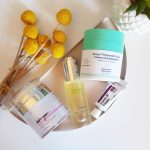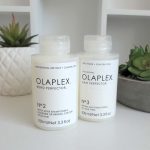Lots of personal care products proudly say they’re “SLS-free”. What was wrong with it in the first place?
Sodium lauryl sulfate (also known as sodium dodecyl sulfate, or sodium coco-sulfate) is found in many personal care products, such as shampoo, toothpaste . It looks like this:
It has an oil-soluble “tail” (on the left) and a water-soluble “head” (with the plus/minus signs on right). This means it’s very useful in making foamy bubbles and making oil and water mix together, which are its two main uses in personal care products.
If you remember from the face washing post, surfactants helps oil lift off from skin. Sodium lauryl sulfate is very good at this – a bit too good. That oil serves to keep water in your skin, and keep things out. Unfortunately SLS in larger quantities, or for longer periods of time, can strip too much, causing irritation. 5% SLS in a product is usually enough to cause irritation in most people, but many people are sensitive to far less.
However, although it’s a potent irritant, there is no evidence that it causes cancer, as is sometimes claimed.
An interesting link has been found between SLS-containing toothpastes and the development of mouth ulcers or canker sores. The bottom line is, if you’re prone to canker sores (sadly, I am), switching to an SLS-free toothpaste may help.
For the other toiletries, there’s no need to panic and throw all the SLS-containing bottles out – if you’re happy with how your SLS-containing shampoo/soap/cream performs, then it’s probably fine. If you’re experiencing itching, flaking, dryness or redness, then it might help to try out some SLS-free products.
References
S Marrakchi, H I Maibach. Sodium lauryl sulfate-induced irritation in the human face: regional and age-related differences. Skin Pharmacol Physiol, 2006, 19, 177.
C M Healy, M Paterson, S Joyston-Bechal, D M Williams, M H Thornhill. The effect of a sodium lauryl sulfate-free dentifrice on patients with recurrent oral ulceration. Oral Dis 1999, 5, 39.






I love your attitude to ‘horrible’ ingredients! 🙂 You give people the information they need to make informed decisions about what products they use on themselves. I am getting sick of the ‘chemical = bad, natural = good’ argument when in reality everything is a chemical 🙂
@Lexie – Thanks! 🙂 I completely agree, I think a lot of people tend to buy into the romance of the pristine-natural-earth-mother fantasy unthinkingly, rather than because the ingredients are actually proven to work or because the companies themselves are more environmentally friendly.
Love your chemically posts! Woohoo Science!
You always give such concise, easy to understand explanations. I love how smart I feel after I come visit the Lab. ^_-
I’m going to have to check my beauty products, I’ve never noticed it before.
I agree with Lexi. It’s so nice to get the real information on these hot button types of products.
@Stef and Elizabeth – thank you 🙂 So glad someone reads them!
@PrettyPurplePolish – I spent a lot of baths in my childhood reading the backs of shampoo bottles… I was a bit of a nutty kid!
@Shannon-Lee – Glad you liked it 🙂
I used to read the back of shampoo bottles too! I had fun trying to pronounce the really long strange sounding ingredients. 😛
This was a really helpful post! I’ve got eczema on my legs, and recently switched to SLS free and it’s helped with the irritation heaps – I hardly get attacks anymore.
I agree that if you don’t have an issue with them then don’t worry about using them!
Same here! Much less flare ups without it. I was even losing hair on my head because of SLS irritation.
Are SLS and sodium coco-sulfate really the same? I tend to get scalp irritation from SLS-containing shampoos and so many of the “alternatives” substitute SCS